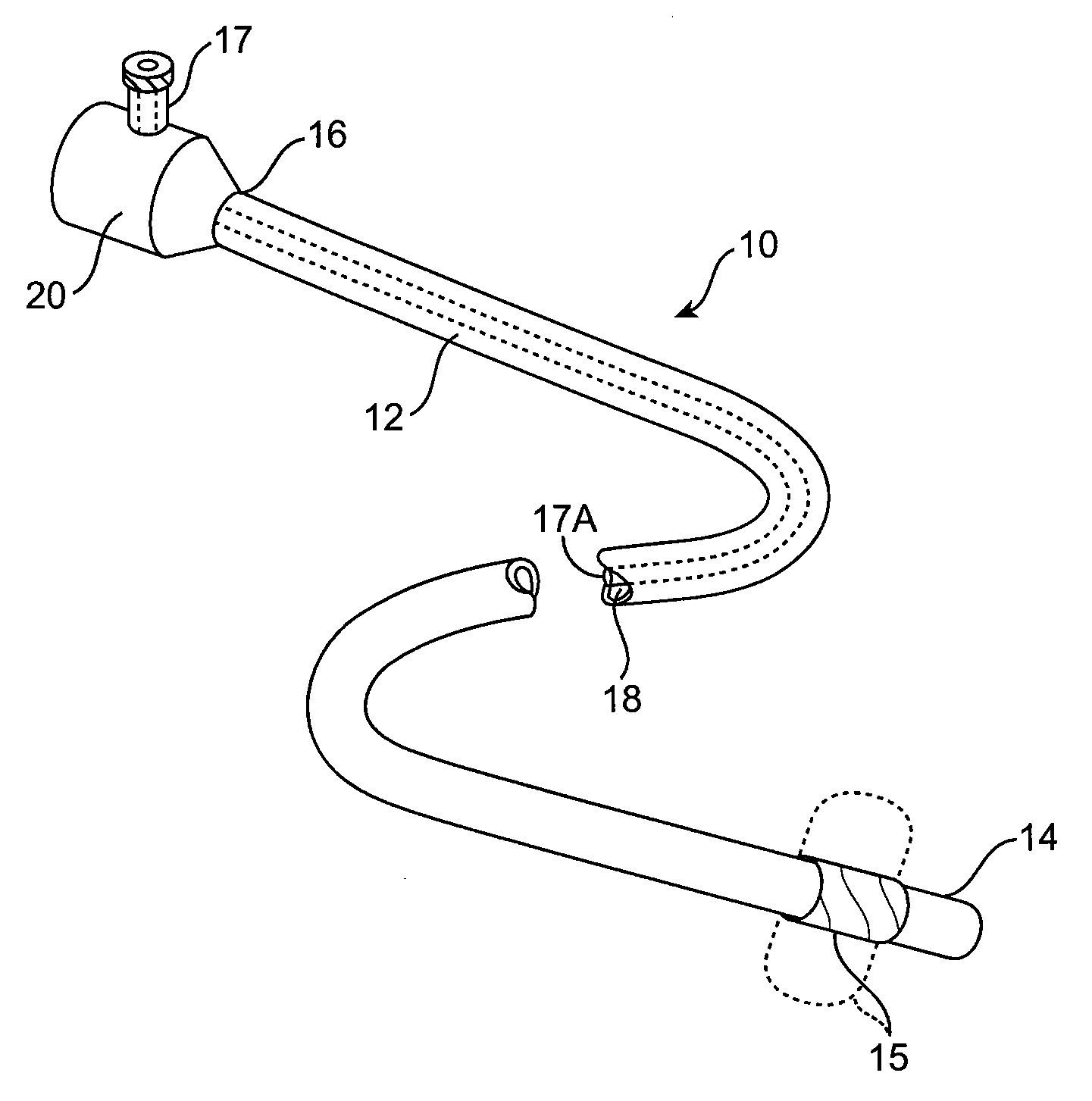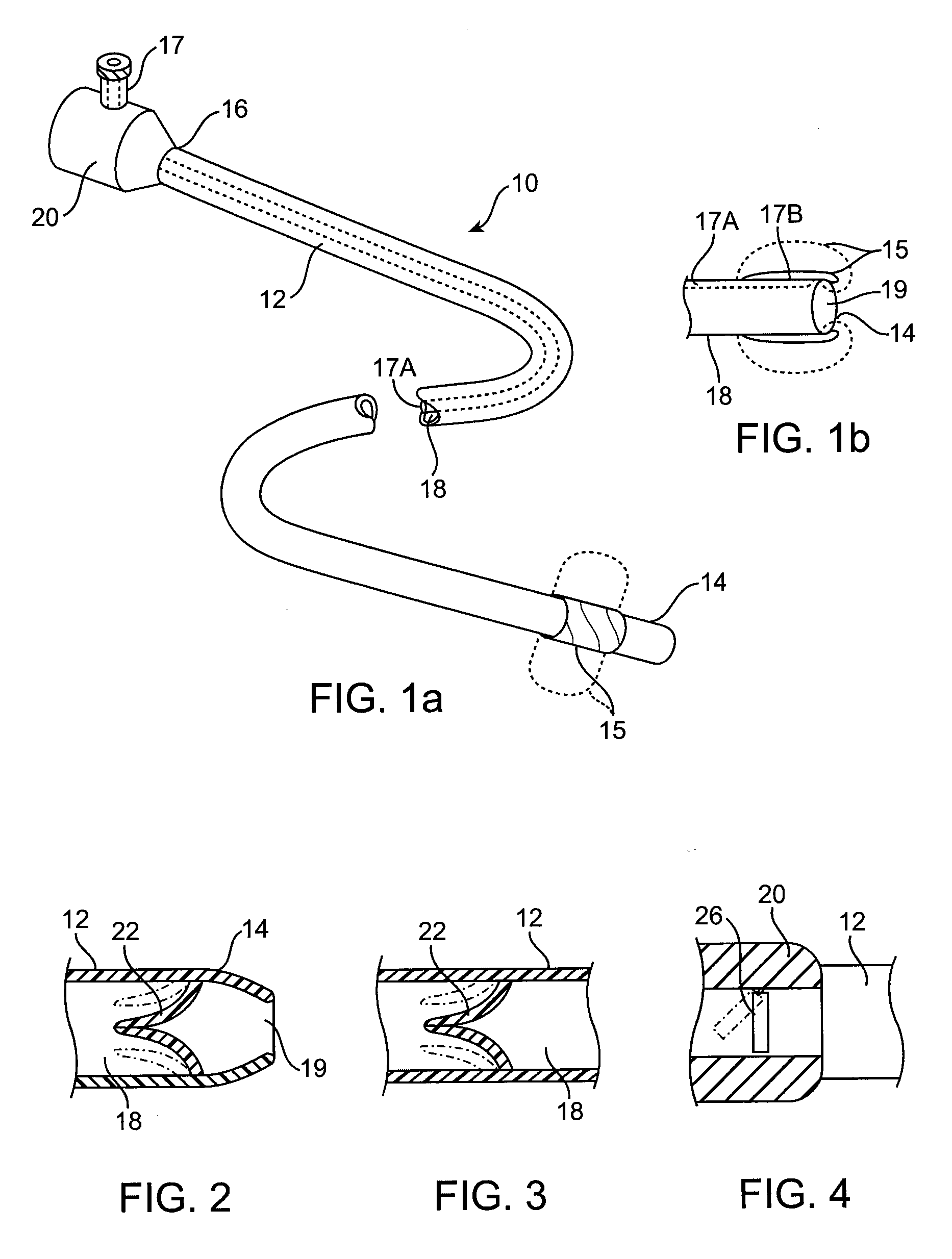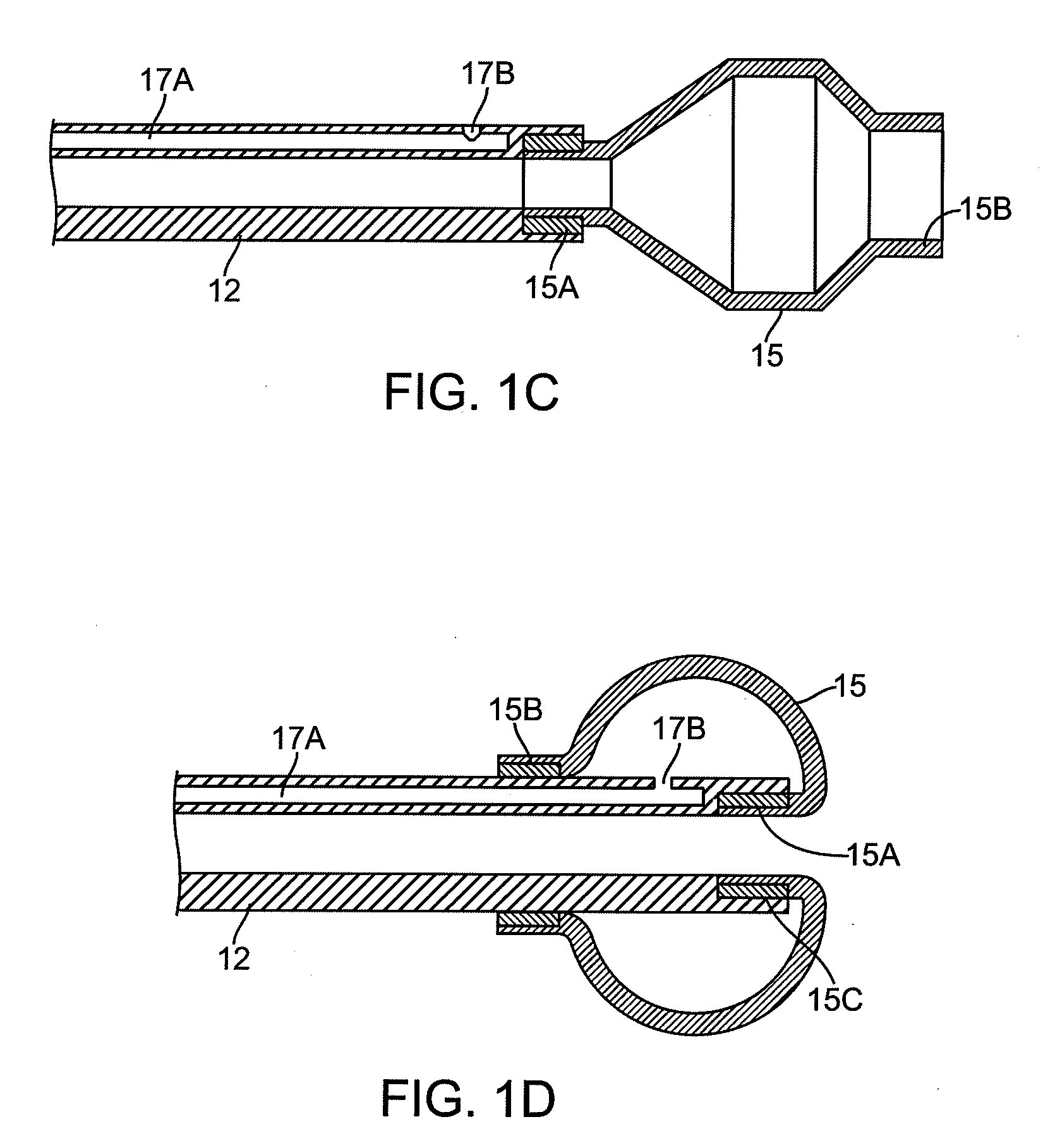Methods and devices for passive residual lung volume reduction and functional lung volume expansion
a technology of passive residual lung volume and functional lung volume, applied in the field of medical methods and equipment, can solve the problems of limited devices, and limited use of pulmonary passageway viewing devices, and achieve the effect of reducing residual volum
- Summary
- Abstract
- Description
- Claims
- Application Information
AI Technical Summary
Benefits of technology
Problems solved by technology
Method used
Image
Examples
Embodiment Construction
[0035]Referring to FIGS. 1a and 1b, an endobronchial lung volume reduction catheter 10 constructed in accordance with the principles of the present invention includes an elongate catheter body 12 having a distal end 14 and a proximal end 16. Catheter body 12 includes at least one lumen or central passage 18 extending generally from the distal end 14 to the proximal end 16. Lumen 18 will have a distal opening 19 at or near the distal end 14 in order to permit air or other lung gases to enter the lumen and flow in a distal-to-proximal direction out through the proximal end of the lumen. Additionally, catheter body 12 will have an expandable occluding member or element 15 at or near the distal end 14, to occlude an air passageway during treatment.
[0036]As mentioned above, in one embodiment the expandable occluding member is disposed near the distal end of the catheter body to seal the passageway, while in an alternate embodiment the expandable occluding element forms a cover of the rim...
PUM
| Property | Measurement | Unit |
|---|---|---|
| Luminous flux | aaaaa | aaaaa |
| Diameter | aaaaa | aaaaa |
| Diameter | aaaaa | aaaaa |
Abstract
Description
Claims
Application Information
 Login to View More
Login to View More - R&D
- Intellectual Property
- Life Sciences
- Materials
- Tech Scout
- Unparalleled Data Quality
- Higher Quality Content
- 60% Fewer Hallucinations
Browse by: Latest US Patents, China's latest patents, Technical Efficacy Thesaurus, Application Domain, Technology Topic, Popular Technical Reports.
© 2025 PatSnap. All rights reserved.Legal|Privacy policy|Modern Slavery Act Transparency Statement|Sitemap|About US| Contact US: help@patsnap.com



